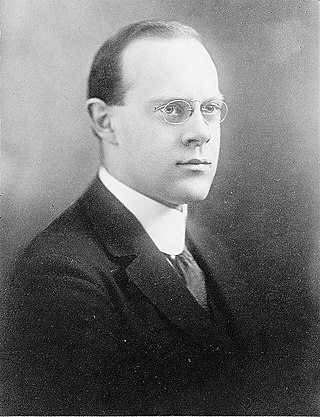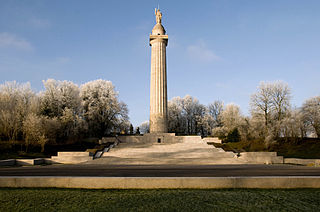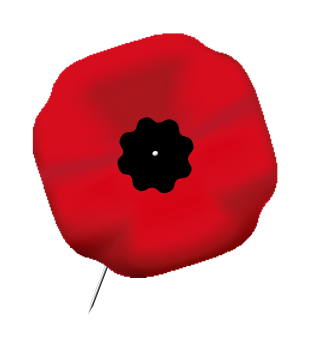
Cher Ami was a male homing pigeon who had been donated by the pigeon fanciers of Britain for use by the U.S. Army Signal Corps in France during World War I and had been trained by American pigeoners. He is famous for delivering a message from an encircled battalion despite serious injuries during the Meuse-Argonne offensive in October 1918.

The Meuse–Argonne offensive was a major part of the final Allied offensive of World War I that stretched along the entire Western Front. It was fought from September 26, 1918, until the Armistice of November 11, 1918, a total of 47 days. The Meuse–Argonne offensive was the largest in United States military history, involving 1.2 million American soldiers. It is also the deadliest battle in the history of the United States Army, resulting in over 350,000 casualties, including 28,000 German lives, 26,277 American lives and an unknown number of French lives. American losses were worsened by the inexperience of many of the troops, the tactics used during the early phases of the operation and the widespread onset of the global influenza outbreak called the "Spanish flu".

The National World War I Memorial is a national memorial commemorating the service rendered by members of the United States Armed Forces in World War I. The 2015 National Defense Authorization Act authorized the World War I Centennial Commission to build the memorial in Pershing Park, located at 14th Street and Pennsylvania Avenue NW in Washington, D.C. The park, which has existed since 1981, also contains the John J. Pershing General of the Armies commemorative work. In January 2016, the design commission selected the submission "The Weight of Sacrifice", by a team consisting of Joseph Weishaar, Sabin Howard, Phoebe Lickwar, and GWWO Architects, as the winning design, which is expected to be completed by 2024.

Thomas Woodnutt Miller was an American politician serving as a Republican U.S. Representative for Delaware's at-large congressional district. He was a veteran of World War I and a member of the American Legion, who served as a National Legislative Committee chairman.
Edward F. Younger was the American United States Army soldier selected to choose the body that would become the American Unknown Soldier, representing all of those who were lost by the United States during World War I.

The Meuse-Argonne American Memorial is an American World War I memorial commemorating "the brilliant victory of the American First Army in the Meuse-Argonne offensive, September 26 – November 11, 1918, and pays tribute to the previous heroic services of the Armies of France on the important battle front upon which the memorial has been constructed." It was erected by the United States Government and is the largest of the American war memorials in Europe. Outside Montfaucon in the Meuse department in Grand Est in north-eastern France, it was unveiled on August 1, 1937. The memorial was designed by John Russell Pope. He designed a massive, Doric column in granite. It is surmounted by a statue symbolic of liberty and towers 71 metres (233 ft) above the hill and the war ruins of the village around it.

Major General George Brand Duncan was a United States Army officer who served in numerous conflicts, most notably World War I, where he commanded the 82nd Division, now the 82nd Airborne Division.

Romagne-sous-Montfaucon is a commune in the Meuse department in Grand Est in north-eastern France. The Commune is home to the Romagne '14-'18 museum of WWI artifacts

Patrick K. O’Donnell is an American author of books on military history.

General of the Armies John Joseph Pershing, nicknamed "Black Jack", was a senior United States Army officer. He served most famously as the commander of the American Expeditionary Forces (AEF) on the Western Front during World War I, from 1917 to 1918. In addition to leading the AEF to victory in World War I, Pershing notably served as a mentor to many in the generation of generals who led the United States Army during World War II, including George C. Marshall, Dwight D. Eisenhower, Omar Bradley, Lesley J. McNair, George S. Patton and Douglas MacArthur.

William Mason Wright was a career officer in the United States Army. He attained the rank of lieutenant general and was most notable for his service as a division and corps commander during World War I.

John J. Pershing General of the Armies, is a public artwork by American artist Robert White, located at Pershing Park in Washington, D.C., United States. John J. Pershing General of the Armies was originally surveyed as part of the Smithsonian's Save Outdoor Sculpture! survey in 1994. The monument is a tribute to United States Army general John J. Pershing.

The First World War centenary was the centenary of the First World War, which began on 28 July 2014 with a series of commemorations of the outbreak of the war organised across the continent of Europe, and ended on 11 November 2018 with the centenary of the 1918 Armistice, during which multiple commemorations were held globally, including an international ceremony in Paris.

Major General George Hamilton Cameron was a United States Army officer who had a military career spanning over forty years, at the end of which he attained the rank of major general. Despite serving in numerous conflicts, perhaps his most notable service came in the final years of World War I, where he served as the first commander of the 4th Division, which he later commanded on the Western Front in mid-1918, before being promoted to the command of V Corps, which he led during the short Battle of Saint-Mihiel and then in the early stages of the Meuse–Argonne offensive, the largest battle in the U.S. Army's history, before he was suddenly relieved of his command.

Kenneth A. Clarke serves as the Executive Director for Rescue Village, a humane society located in Geauga County, Ohio. He had previously served as the President and CEO of Pritzker Military Museum and Library in Chicago. He has also authored, published, edited and produced works as Kenneth Clarke and KC Clarke.
Mitchell "Mitch" A. Yockelson is a military historian and archivist. He has written four books including, Borrowed Soldiers: Americans Under British Command 1918, and numerous articles for well-known publications. Yockelson is considered one of the foremost authorities on the topic of World War I. Currently he teaches at Norwich University, and works as an Investigative Archivist at the National Archives and Records Administration. Yockelson resides in Annapolis.
Milton J. Foreman (1863–1935) was a Lieutenant General, who served as Commander in Chief of the Illinois National Guard. Prior to that, he led the 33rd Division, Illinois National Guard. Foreman attended the Paris Caucuses in 1919 of the American Legion as the Illinois representative and was one of its early leaders. He was also active in Illinois politics.

Winged Victory is a World War I memorial in the U.S. state of Washington, which consists of four figures of uniformed persons atop a granite pedestal eclipsed by a fifth figure depicting the Winged Victory of Samothrace.

The Carmel-by-the-Sea World War I Memorial Arch is a World War I memorial designed in 1919 by architect Charles Sumner Greene and located at Ocean Avenue and San Carlos Street center median divider in Carmel-by-the-Sea, California. The Memorial Arch was designated as a significant monument in the city's Downtown Historic District Property Survey, The Memorial Arch was recorded with the Department of Parks and Recreation on November 16, 2001. The Memorial Arch has been a historic landmark since November 1921, when it was built for Carmel World War I veterans. The Spanish Mission Revival style arch is constructed of Carmel sandstone.
















